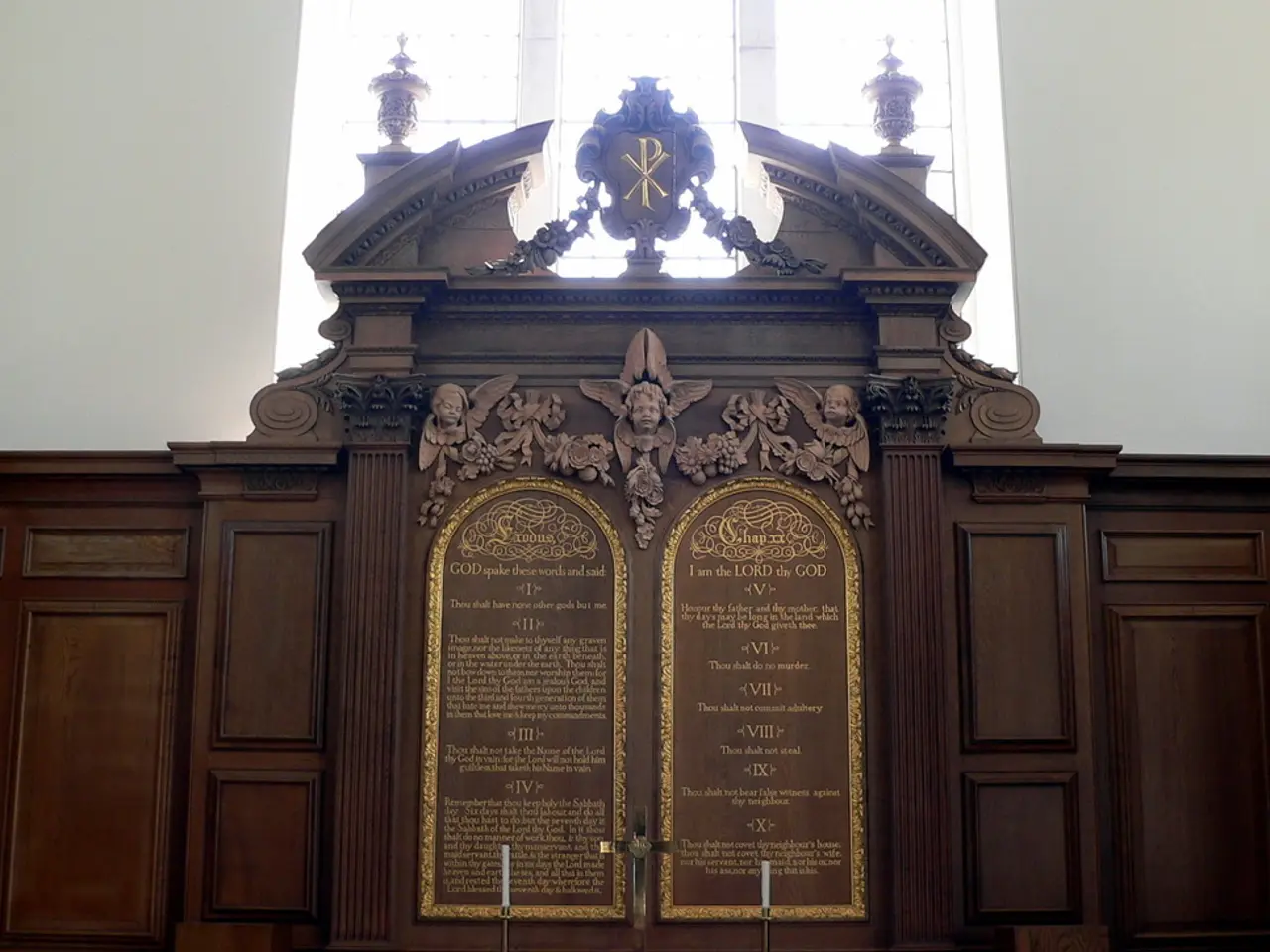A brief overview of Herrenchiemsee Castle
**Schloss Herrenchiemsee: A Grand Homage to Versailles in Bavaria**
Schloss Herrenchiemsee, a majestic palace nestled on the picturesque Herreninsel island in the Chiemsee lake, Bavaria, Germany, is a testament to the grandeur and opulence of the French absolutist monarchy. Constructed between 1878 and 1886 by King Ludwig II of Bavaria, the palace serves as a direct homage to the Palace of Versailles in France[1].
The palace, although not a detailed copy, boasts a design that is heavily inspired by Schloss Versailles, featuring Baroque architecture and ceremonial functions, including a hall of mirrors designed to emulate its famous counterpart in Versailles[1]. Despite its ambitious scale, much of Herrenchiemsee remained unfinished at Ludwig II's death in 1886, leaving the palace as a monumental but incomplete homage.
Situated on an island, Schloss Herrenchiemsee combines natural beauty with architectural splendor by blending seamlessly into the surrounding lake and landscape[4]. This unique location adds to the palace's charm, making it a popular day trip destination from Munich in Bavaria.
Herrenchiemsee was Ludwig II's attempt to recreate the grandeur of the French Sun King Louis XIV's Versailles as an expression of absolute monarchy and royal grandeur, set in the Bavarian landscape. The palace reflects Ludwig's romantic idealization and political admiration of the French monarchy, symbolizing his desire for regal majesty and cultural greatness similar to Versailles[1]. Unlike Versailles, however, Herrenchiemsee never served its full political purpose, as it was built when monarchy was declining in Europe, marking it more as a private retreat and a monument to bygone royal ideals[1].
In 2025, Schloss Herrenchiemsee, along with three other royal residences built by King Ludwig II—Neuschwanstein, Linderhof, and Schachen—was inscribed on the UNESCO World Heritage list[2][3][4]. These castles are recognized collectively for their architectural brilliance, cultural significance, and their embodiment of King Ludwig II's artistic obsession and romantic vision. Neuschwanstein, Linderhof, and Herrenchiemsee together represent the late 19th-century Bavarian royal style, combining fantastical fairy-tale aesthetics with innovative engineering of their time.
The UNESCO designation acknowledges these sites as outstanding examples of romantic architecture intertwined with natural landscapes, and significant testimonies to the cultural and political history of 19th-century Europe[2][3][4].
In a summary table, the four castles' significance can be seen as follows:
| Castle | Historical Context | Architectural Style | UNESCO Significance | |------------------|-----------------------------------|----------------------------------|-------------------------------------------------------------------------------------------------------------------| | **Herrenchiemsee**| Copy of Versailles, unfinished | Baroque palace, homage to French absolutism | Symbol of royal grandeur, cultural link to Versailles, incomplete manifestation of monarchy | | **Neuschwanstein**| Romantic medieval revival | Romantic medieval with modern tech| Most visited, inspired Disney, represents romantic fantasy and technological innovation | | **Linderhof** | Smallest, completed royal palace | Baroque and Rococo influences | Intimate palace with lavish interiors reflecting Ludwig's taste | | **Schachen** | Alpine retreat | Rustic chalet style | Unique mountain residence emphasizing harmony with nature |
Together, these palaces characterize King Ludwig II's idealized vision of monarchy and artistry, combining historical homage, romantic fantasy, and technological innovation, now celebrated as cultural treasures with international recognition by UNESCO[2][3][4].
In conclusion, Schloss Herrenchiemsee is particularly significant as a monumental yet unfinished replica of Versailles, revealing Ludwig II's royal aspirations and admiration for French absolutism. Its inclusion in the UNESCO World Heritage list alongside Neuschwanstein and Linderhof underscores its cultural and historical importance within the context of 19th-century Bavarian architecture and heritage. The palace's interiors are adorned with various artworks, including paintings and sculptures, making it a must-visit destination for art enthusiasts.
The palace, reflecting its designer's admiration for the French absolutist monarchy, is a travel destination that showcases a lifestyle steeped in royal grandeur, mirroring the architectural style of Versailles. The unfinished Schloss Herrenchiemsee, situated on an island, offers a unique blend of natural beauty and architectural splendor, inviting visitors to step into a reimagined and romanticized lifestyle of the past.




